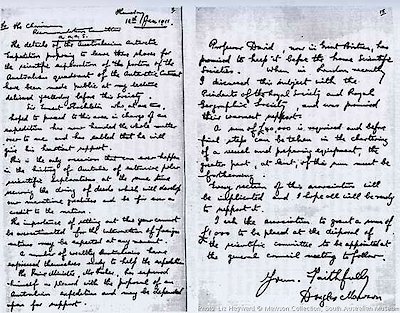Enter the Commonwealth
Things were looking up. The premiers of Queensland and Western Australia had declined to provide funding, but that did not seem to matter. The Victorian premier had already described the AAE as ‘a gigantic educational expedition, the like of which had never been projected before in any part of the world’. With the support of four states behind him, Mawson was confident that the young Commonwealth — Australia’s new federal government — would come to the party.
The spotlight fell squarely on Mawson at the Melbourne Town Hall on 13 September 1911. A large public meeting was attended by the governor-general, the prime minister and the leader of the opposition, as well as members of Mawson’s organising committee. A motion put by prime minister Fisher and seconded by the opposition leader, Alfred Deakin, recorded that the meeting;
… hails with satisfaction the prospect of an Australasian expedition under the leadership of Dr Mawson for the exploration of the Australasian Quadrant of the Antarctic continent … [and] cordially recommends it to the sympathetic consideration and practical support of the people of Australia.
With such a fanfare Mawson might have hoped for more than the £5000 subsequently voted by the Commonwealth, but with funds now totalling £38,000, the expedition had a solid financial basis.
Nevertheless, the AAE sailed out of Hobart on 2nd December 1911 still deeply in debt — many thousands of pounds below the estimated cost of £48000. Another £8000 would be raised after the expedition’s departure, including a second Commonwealth grant of £5,000. In the end, the bulk of funds for the AAE came from State and Commonwealth governments.

